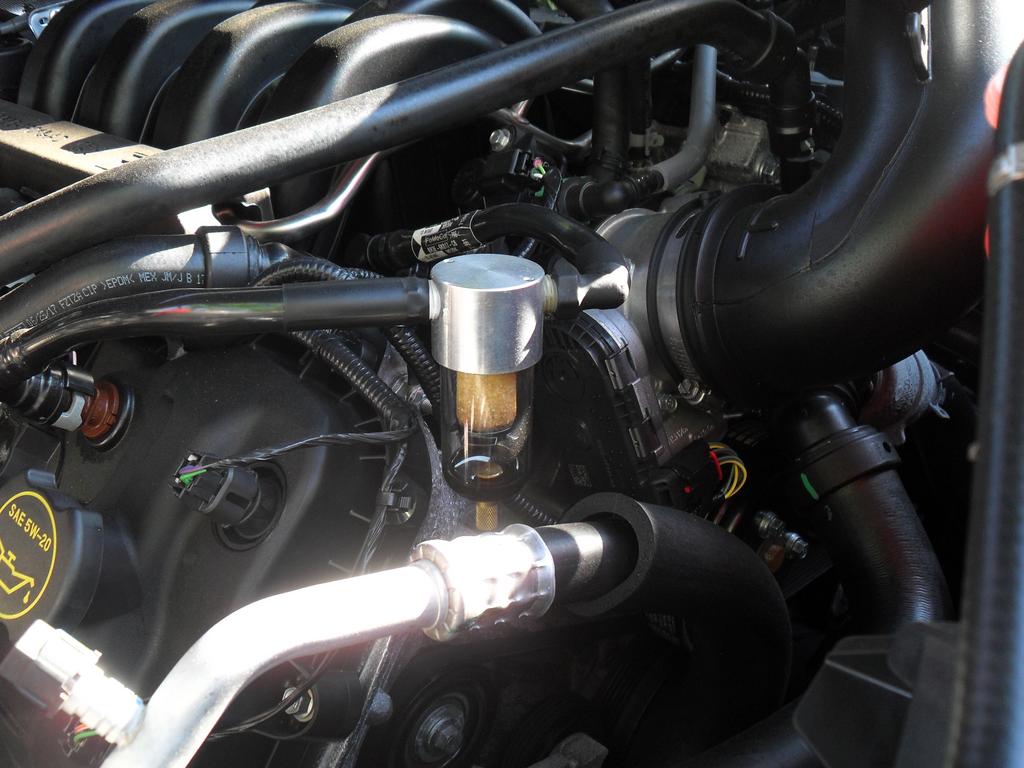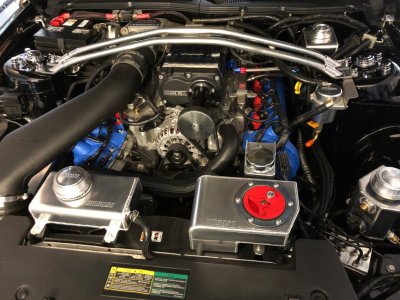Thanks, but can you expound upon that? When is the check valve necessary?
Hi 1950StangJump$,
If I may try to explain..……………….
The usage of a check valve in the PCV system of these engines would be to only ensure 1-way flow direction thru the PCV system.
By design the TB creates proper PCV airflow direction\circulation thru engine CC due to the air flow pressure drop (or deltaP...low pressure to vacuum) across the TB blades while engine is running as long as the TB blades are at some open angle less than 100% open (not full open or parallel to air flow direction thru TB). Ford ensures this doesn't happen in the PCM as the PCM commands the TB independent of the APP pedal command (your accelerator pedal) so the TB will
only fully open to a net max of 82% open travel when the APP pedal command is commanding a max of 96% open travel (this is @ WOT....anything over 96% open pedal travel command is seen in the PCM as a throttle error & will set a DTC code & put the engine in safe mode & close the TB blades...the wrench light in IC) so that the TB will
always create an airflow pressure drop across the blades to ensure proper PCV airflow circulation
and direction thru engine CC is maintained at all engine operating RPM's (so the TB
never opens the blades to full 100% or parallel to airflow passing thru it) regardless of commanded accelerator pedal travel.
This is necessary info to understand how the PCV system as designed on these cars actually works to then answer your question. If curious all this info can be found in the Ford Workshop Manual for these cars (which is stickied at the top of this forum section if interested).
So when using supercharging concerning the PCV system, the Roots\TVS type supercharging (such as the Kenne Bell set up you have) doesn't
need a check valve installed in the PCV system (which is what 07 Boss is referring to) as they retain the full OEM design of air induction thru the TB (all inlet airflow is drawn thru the TB blades at all times at low pressure creating a vacuum downstream of the TB) thus the OEM PCV airflow operation. It won't
hurt to install a check valve w\ these type superchargers as long as the installed check valve's flow direction
allows the normal airflow path thru the PCV system but is it necessary....no.
Now when either centrifugal or turbo supercharging is used they
require the use of a PCV inline check valve between the PCV outlet port off driver side valve cover where the internal PCV valve resides & intake manifold inlet port downstream of the TB to prevent
air back flow (or reverse recycling) thru the PCV system thus engine CC due to the intake tract downstream of the blowers (which will include the TB & intake manifold) being under positive air pressure when boost is applied so the engine doesn't lose boost pressure to the cylinders but more importantly the
engine's CC isn't pressurized while boosted. But since the normal outlet path for the PCV air flow circulation is now closed off by boost pressure against the inline check valve the engine CC will vent any CC blow-by gasses back thru the PCV passenger side valve cover inlet port into the inlet side (low pressure) of the PCV system upstream of the centri\turbo system. Once these systems are returned from a boosted state (or bypassed thru a bypass valve or BOV) the inline check valve will then open as the TB will now be creating the
normal deltaP thru it (low pressure\vacuum) allowing the normal PCV airflow direction back thru the engine CC & into the intake manifold.
All this info is presumed on maintaining the normal engine's OEM designed PCV system operation intact as originally designed by Ford...………...
Hope this helps you out.








